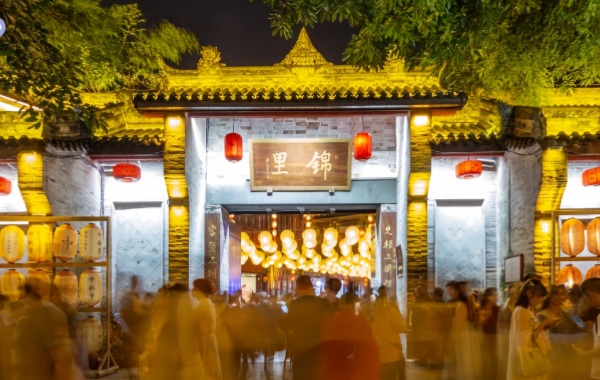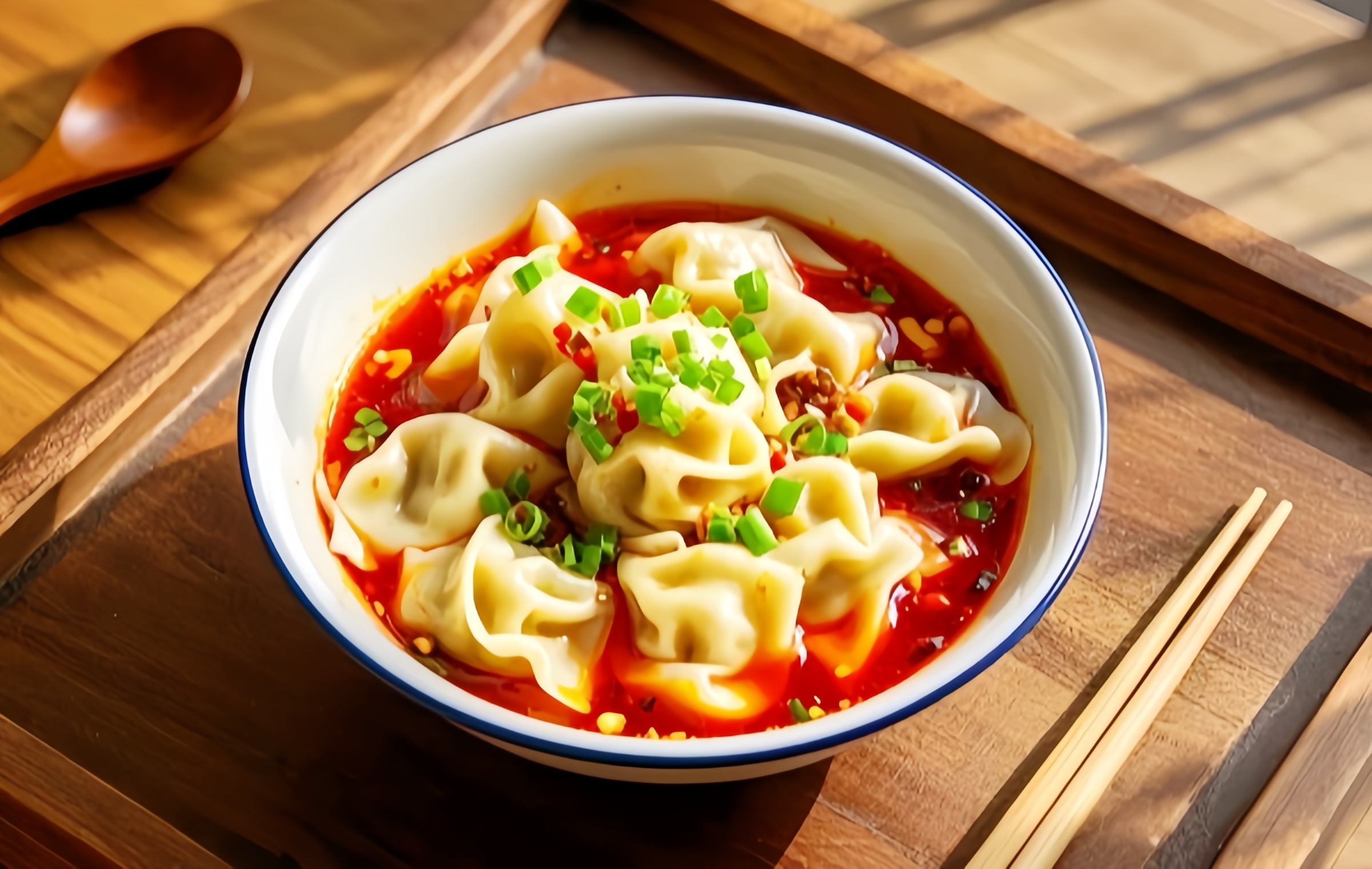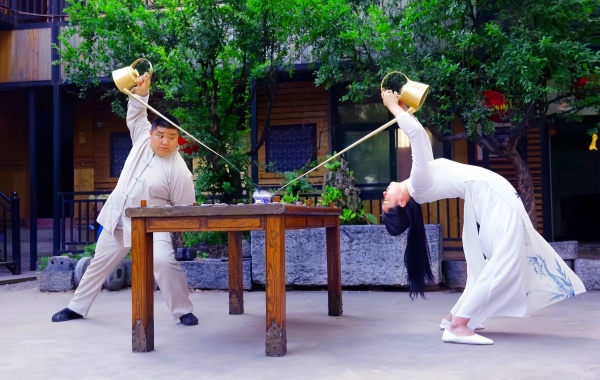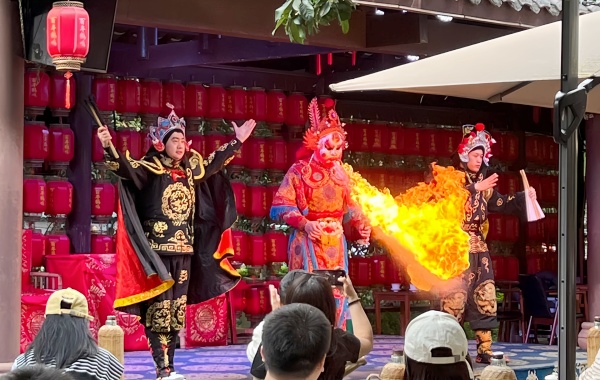Jinli Ancient Street
Historical Background
Jinli's storied past stretches back to the Qin Dynasty (221–206 BCE), when it flourished as a vibrant hub of commerce and craftsmanship. Its name, translating to "Craftsman’s Alley," pays homage to its origins as a gathering place for artisans and merchants. The street reached new heights during the Three Kingdoms period (220–280 CE) under the patronage of Liu Bei, the revered founder of the Shu Han kingdom. Following centuries of transformation, Jinli was meticulously restored in 2004 to safeguard its cultural heritage, now harmonizing historical reenactments with contemporary tourism through annual events like the Lantern Fair and Temple Bazaar, which celebrate its enduring legacy.
Architectural Style
Jinli's landscape is a living tableau of Qing Dynasty aesthetics, characterized by sweeping curved eaves, intricately carved wooden beams, and meandering stone pathways. Crimson lanterns sway above every archway, casting a warm glow over courtyard residences and traditional teahouses that exude timeless elegance. Landmark venues include the Sanxingdui Cultural Exhibition Hall, showcasing enigmatic bronze masks and jade artifacts from the ancient Shu civilization, and the Shu Kingdom History Museum, where pottery and relics narrate tales of dynastic splendor.
 pic: Jinli Ancient Street ↑
pic: Jinli Ancient Street ↑
Culinary Delights
A paradise for epicureans, Jinli buzzes with food stalls offering iconic Sichuan flavors. Savor the fiery kick of dan dan mian (spicy sesame noodles), the delicate folds of long chaoshou (dragon-shaped wontons), and the nostalgic sweetness of sugar-coated haws on sticks. For a cooling treat, indulge in rose ice cream or the chewy richness of three-gun sticky rice, a dessert pounded with bamboo mallets. Al fresco seating at many eateries lets you dine amid lively street performances, from folk dances to puppet shows.
 pic: Long Chaoshou ↑
pic: Long Chaoshou ↑
Handicrafts and Artistry
Jinli thrives as a sanctuary for traditional crafts. Watch master artisans breathe life into face-changing masks—a mesmerizing Sichuan Opera technique—or create intricate sugar paintings and woven bamboo baskets. Browse souvenirs like Shu embroidery (featuring phoenixes and peonies), glossy lacquerware, and handcrafted Tibetan silver jewelry. Interactive workshops invite visitors to try their hand at calligraphy, clay sculpture, or paper-cutting, offering a tangible connection to China’s artistic legacy.
 pic: Tea Ceremony Performance ↑
pic: Tea Ceremony Performance ↑
Cultural Performances
The street pulses with daily cultural spectacles. Sichuan Opera troupes dazzle with acrobatics, shadow puppetry, and the legendary bian lian (face-changing), where performers swiftly swap masks in a blur of color. In tranquil courtyard teahouses, sip jasmine tea while enjoying live pipa (lute) melodies or storytelling sessions. As dusk falls, Jinli transforms into a stage for light shows projecting ancient myths onto tiled roofs, and the fire-dragon dance—a swirling spectacle of incense and flame—crowns the evening with magic.
 pic: Sichuan Opera Fire-breathing ↑
pic: Sichuan Opera Fire-breathing ↑
Accommodation and Nearby Attractions
While Jinli itself has no hotels, the adjacent Wuhouci District offers boutique inns and luxury resorts, many with views of lush gardens or historic temples. Pair your visit with the Wuhou Memorial Temple, honoring the strategic genius Zhuge Liang, or the Jinsha Site Museum, where golden Sun God artifacts and jade axes reveal Chengdu’s prehistoric roots. Nearby Kuanzhai Alley invites further exploration with its labyrinth of Qing Dynasty lanes and hidden courtyard cafés.
Travel Tips
- Best Time to Visit: Early morning or late afternoon to avoid crowds.
- Tickets: Free entry; performances and workshops may require fees.
- Transport: Take subway Line 3 to Gaoshengqiao Station (Exit D) or Line 2 to Chunxi Road Station (Exit E).
- Essentials: Carry cash for street vendors; wear comfortable shoes for cobblestone paths.
- Respect Local Customs: Bargain politely in markets and avoid touching cultural artifacts.
Contact Us
What Our Clients Say?
Based on 10,000+ traveler reviews













